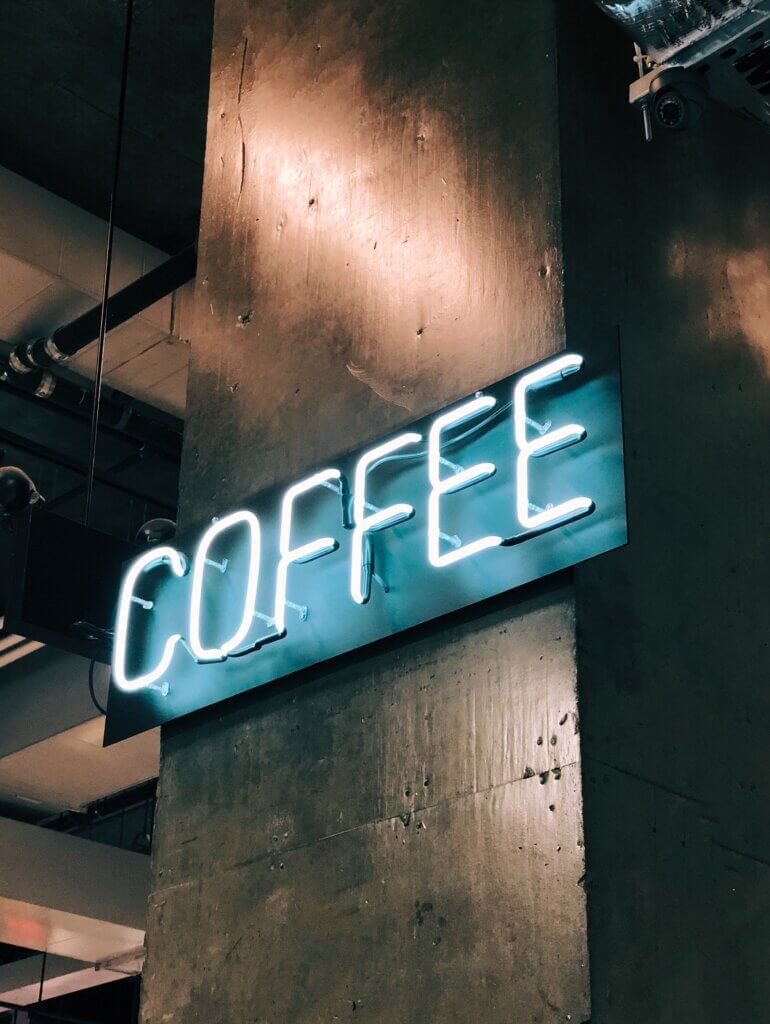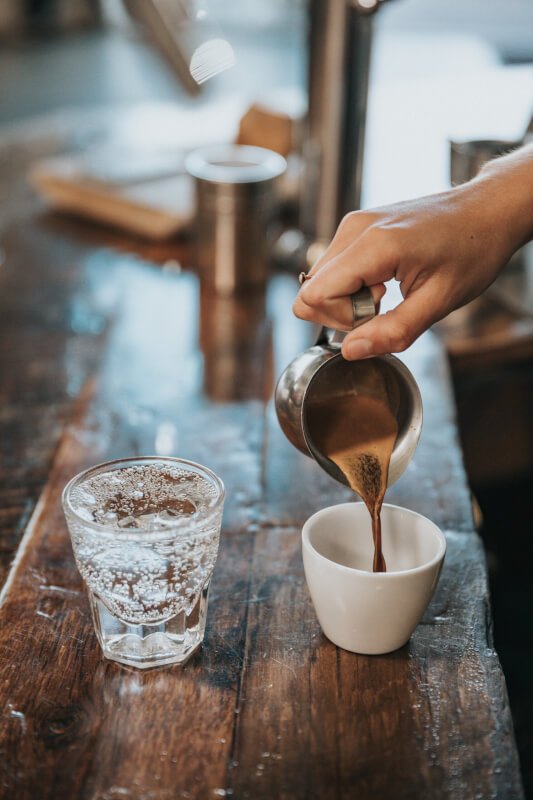Are you tired of your usual hot cup of coffee? Looking for a refreshing and smooth alternative? Look no further! In this article, you will discover the fascinating world of cold brewing coffee techniques. Whether you’re a coffee enthusiast or just curious about trying something new, we’ve got you covered. From the basic principles to advanced methods, you’ll learn how to achieve that perfect, full-bodied flavor without any bitterness. Get ready to embark on a delightful journey of cold brewing coffee that will undoubtedly elevate your caffeine experience.

Choosing the Right Beans
When it comes to cold brewing coffee, selecting the right beans is essential for achieving a delicious and satisfying flavor. Coffee origin plays a significant role in determining the taste profile of your cold brew. Different coffee origins offer unique flavor characteristics, so it’s worth exploring a variety of options to find your preferred taste. Whether you prefer a vibrant and acidic brew or a smooth and chocolatey flavor, there is a coffee origin out there to suit your taste buds.
Deciding on the Roast Level
The roast level of your coffee beans also impacts the flavor of your cold brew. Lighter roasts tend to bring out brighter and fruitier flavors, while darker roasts offer a richer and more robust taste. Consider your personal preferences and the desired flavor profile when selecting the roast level for your cold brew. If you’re unsure, you can always experiment with different roast levels to find the one that suits you best.

Considering the Bean Size and Grind
The size of the coffee beans and the grind consistency are crucial factors in cold brewing. Generally, coarser grinds are preferred for cold brew to avoid over-extraction and a bitter taste. However, the ideal grind size may vary depending on the specific brewing method you choose. Larger beans tend to be easier to grind consistently, ensuring an even extraction during the brewing process. Take these factors into account when selecting your beans and grinding them to achieve the perfect cold brew.
Exploring Different Bean Varieties
Don’t be afraid to step out of your comfort zone and try different bean varieties for your cold brew. There is a wide range of bean options available, each offering its own distinct flavor profile. From single-origin beans to blended varieties, the possibilities are endless. Experimenting with different bean varieties can be an exciting way to discover new flavors and enhance your cold brewing experience. So why not venture beyond your usual choices and explore the diverse world of coffee beans?

Equipment Needed
To embark on your cold brewing journey, it’s important to have the right equipment at hand. While the specific equipment may vary depending on your chosen brewing method, there are some essential tools that every cold brew enthusiast should have in their arsenal.
French Press
A French press can be a versatile tool for cold brewing. Its ability to steep coffee and separate the grounds from the liquid make it a popular choice among cold brew enthusiasts. Its straightforward design and ease of use make it an excellent option for beginners.
Mason Jars
Mason jars are a classic and budget-friendly option for cold brewing. Their airtight lids make them perfect for storing your cold brew in the refrigerator and keeping it fresh. Plus, their transparent glass allows you to admire the beautiful color of your cold brew as it steeps.
Cold Brew Towers
Cold brew towers add a touch of elegance to the cold brewing process. These vertical brewing systems are not only functional but also visually appealing. With their multiple chambers and gravity-infusion technique, cold brew towers offer a unique way to create smooth and flavorful cold brew.
Drip Coffee Maker
If you already have a drip coffee maker at home, you can adapt it for cold brewing by using a specific set of instructions. This can be a convenient option if you don’t want to invest in additional equipment but still want to enjoy the benefits of cold brew.
Cold Brew Bags
Cold brew bags are specially designed for the cold brewing process. These fine mesh bags allow for easy steeping and filtration of the coffee grounds. They are an excellent choice for those who prefer a more convenient and mess-free cold brewing experience.
Grinder
Investing in a quality grinder is essential for achieving a consistent grind size. Burr grinders are highly recommended for cold brewing as they ensure a precise and uniform grind. Avoid blade grinders, as they often result in an uneven grind, which can affect the extraction of flavors during the brewing process.
Filtered Water
Using cold filtered water is crucial to achieving the best flavor in your cold brew. By removing impurities and unwanted flavors, filtered water allows the natural flavors of the coffee to shine through. Avoid using tap water as it can contain chlorine or other contaminants that may impact the taste of your cold brew.
Measuring Tools
To achieve a consistent brew, measuring your ingredients accurately is essential. Investing in a scale or using measuring scoops can help you achieve the desired coffee-to-water ratio and create a consistently flavorful cold brew.
Stirring Utensil
Having a dedicated stirring utensil, such as a long-handled spoon or paddle, can make the brewing process easier. It allows you to mix the grounds and water thoroughly during the steeping process, ensuring an even extraction and better flavor.
Optional: Filtration Method
Depending on your preference, you may choose to employ a filtration method to remove any unwanted sediment or particles from your cold brew. This can be achieved using various tools such as cheesecloth, nut milk bags, or specific cold brew filters. While not necessary, filtration can result in a smoother and cleaner tasting cold brew.
Cold Brew Ratio
Understanding the ratio concept is key to achieving the perfect cold brew every time. The ratio refers to the amount of coffee grounds to water used in the brewing process. It determines the strength and flavor intensity of your final cold brew. Depending on your preference, you can adjust the ratio to achieve a milder or stronger brew.
Using a Standard Ratio
A commonly used standard ratio for cold brew is 1:4, meaning one part coffee grounds to four parts water. This ratio typically produces a balanced and smooth cold brew. However, feel free to adjust this ratio based on your taste preference.
Adjusting Ratios for Personal Preference
If you prefer a milder brew, you can increase the water-to-coffee ratio. For example, 1:5 or 1:6 ratios can result in a lighter flavor profile. On the other hand, if you’re looking for a stronger kick, you can decrease the water-to-coffee ratio to 1:3 or even 1:2. Experimenting with different ratios can help you find your perfect balance.
Experimenting with Different Ratios
Cold brewing allows for a great deal of flexibility in experimenting with ratios. You can vary the amount of coffee grounds and water to explore different taste profiles. Keep track of the ratios you try and the resulting flavors to find the ideal ratio that suits your personal preference.

Cold Brewing Methods
There are various methods you can choose from when it comes to cold brewing coffee. Each method offers unique advantages and can result in different flavor profiles. Whether you prefer a simple and straightforward immersion method or a more intricate slow-drip process, there’s a method out there for you.
Basic Immersion Method
The basic immersion method involves steeping the coffee grounds in water for a certain period to extract the flavors. This method is popular for its simplicity and requires minimal equipment. You can use a French press, mason jar, or any container with a lid to achieve great results using this method.
Toddy System
The Toddy system is a cold brew method that utilizes a unique brewing container designed specifically for cold brewing. It involves a long steeping time and a specific filtration process that results in a smooth and low-acid cold brew. The Toddy system is known for producing concentrated cold brew, allowing you to dilute it to your desired strength when serving.
Japanese Iced Coffee Method
The Japanese iced coffee method involves brewing coffee directly over ice, resulting in a quick cooling process that preserves the natural flavors of the coffee. This method is favored for its ability to highlight the aromatic and delicate characteristics of the coffee beans. It’s a great choice if you prefer a bright and refreshing cold brew.
Slow Drip Method
The slow drip method, also known as cold drip or Kyoto-style coffee, is a more intricate and time-consuming brewing method. It involves water slowly dripping through a bed of coffee grounds to extract the flavors. This method often produces a uniquely smooth and nuanced cold brew with remarkable clarity.
Coffee Bag Method
The coffee bag method offers a convenient and mess-free way to cold brew coffee. Simply place your desired amount of coffee grounds in a cold brew bag, and steep it in water. This method allows for easy cleanup and is ideal for those who prefer a hassle-free cold brewing process.
Grinding the Coffee
Grinding your coffee beans is a crucial step in the cold brewing process. The grind size and consistency influence the extraction rate and the flavor of your cold brew. It’s important to choose the right grind size and ensure consistency throughout the grinding process.
Choosing the Right Grind Size
For cold brewing, a coarse grind size is generally recommended. Coarse grinds allow for a slower extraction and help prevent over-extraction, resulting in a smoother and less bitter cold brew. Adjusting the grind size can affect the flavor profile, so experiment with different sizes to find the one that suits your taste.
Exploring Grind Consistency
Consistency in grind size is essential to ensure an even extraction of flavors. Unevenly ground coffee can result in over-extraction in some areas and under-extraction in others, leading to an imbalanced taste. Invest in a burr grinder for consistent results and avoid blade grinders that tend to produce uneven grinds.
Using a Burr Grinder
Burr grinders are highly recommended for cold brew enthusiasts. They offer precise control over grind size and produce consistent results. Burr grinders crush the beans uniformly, resulting in a more even extraction of flavors. If you’re serious about cold brewing, investing in a quality burr grinder is a worthwhile choice.
Avoiding Blade Grinders
Blade grinders, commonly found in most kitchens, are not ideal for cold brewing. They tend to chop the beans unevenly, resulting in an inconsistent grind size. This can negatively impact the extraction process and affect the flavor of your cold brew. While blade grinders may be convenient, they aren’t the best choice for achieving a high-quality cold brew.
Taking Note of Ground Coffee Quantity
The quantity of ground coffee you use in your cold brew plays a significant role in determining the strength and flavor profile. It’s essential to measure the coffee grounds accurately based on the desired coffee-to-water ratio. Use measuring tools or a scale to ensure consistent results and adjust the quantity as needed to achieve your preferred taste.

Water Temperature and Quality
Water temperature and quality are often overlooked but can greatly impact the taste of your cold brew. Cold filtered water is the best choice for cold brewing as it offers a clean canvas for extracting the flavors of the coffee. Paying attention to the water temperature is also crucial to avoid potential pitfalls.
Importance of Using Cold Filtered Water
Using cold filtered water is crucial for achieving the best possible flavor in your cold brew. Filtered water removes impurities and unwanted flavors, allowing the natural flavors of the coffee to shine through. Tap water often contains chlorine or other substances that can affect the taste of your cold brew. Opting for cold filtered water ensures a cleaner and better-tasting final product.
Determining the Ideal Water Temperature
Contrary to what the name suggests, cold brew doesn’t mean brewing with cold water. The ideal water temperature for cold brewing is typically room temperature or slightly cool. Steeping coffee grounds in cold water can result in under-extraction, while using hot water defeats the purpose of cold brewing. Finding the right balance by using room temperature filtered water helps achieve optimal flavor extraction.
Avoiding Hot Water for Cold Brewing
Using hot water for cold brewing may seem counterintuitive, but some brewing methods do involve a slight temperature increase to enhance flavor extraction. However, it’s important to note that these methods differ from traditional cold brewing. If you’re following a cold brewing method, avoid using hot water, as it can lead to over-extraction and bitterness in your cold brew.
Steeping Time
Steeping time plays a crucial role in determining the strength and flavor of your cold brew. It’s important to understand the steeping process and experiment with different times to find the perfect balance that suits your taste.
Understanding the Steeping Process
Steeping is the process of allowing the coffee grounds to soak in water, extracting the flavors and aromas. The length of the steeping process determines the strength and intensity of your cold brew. During this time, the water gradually absorbs the coffee’s flavors, resulting in a smooth and rich brew.
Long Steeping vs. Short Steeping
The steeping time for cold brew can vary depending on personal preference and the brewing method used. Longer steeping times generally result in a stronger and more concentrated brew, while shorter steeping times produce a milder flavor. It’s important to note that steeping times can range anywhere from 12 to 24 hours, so experimentation is key to finding your ideal steeping duration.
Determining the Ideal Steeping Time
Finding the ideal steeping time for your cold brew may require some trial and error. Start with a recommended steeping time based on your chosen brewing method, and then taste your brew periodically to determine when it reaches the desired flavor strength. Keep notes as you experiment, and soon you’ll have a better understanding of your preferred steeping time.
Experimenting with Different Steeping Times
Don’t be afraid to experiment with different steeping times to find your perfect cup of cold brew. Each brewing method and personal preference can lead to varying results. Try steeping for shorter or longer durations and take note of the taste profiles achieved with each variation. This experimentation process can help you develop a deeper appreciation for the flavors of cold brew.
Filtering the Cold Brew
Filtering your cold brew allows for a cleaner and smoother final product by removing any unwanted sediment or particles. Finding the right filtration method and ensuring an effective filtration process is vital for obtaining a high-quality and enjoyable cold brew.
Choosing the Right Filtration Method
There are various methods you can use to filter your cold brew, depending on the equipment you have and personal preference. Some common filtration methods include using cheesecloth or nut milk bags, specific cold brew filters, or even a sparkling water maker for fine carbonation filtration. Consider the available options and choose the method that suits your needs best.
Using Cheesecloth or Nut Milk Bags
Cheesecloth or nut milk bags are readily available and offer a simple and effective way to filter your cold brew. These fine mesh materials trap the coffee grounds while allowing the liquid to pass through. They are a cost-effective filtration option for those who want to remove sediment and achieve a smoother texture.
Exploring Different Types of Filters
If you prefer a more specialized filtration method, there are various filters designed specifically for cold brewing available in the market. These filters often provide finer filtration to remove even the smallest particles, resulting in an exceptionally clean and smooth cold brew. Experiment with different filter types to find the one that meets your filtration needs.
Cold Dripping for Ultra Smooth Coffee
Cold dripping, also known as Kyoto-style coffee, is a slow and controlled filtration method that can produce a remarkably smooth cold brew. It involves dripping water through coffee grounds over an extended period, allowing for precise extraction and filtering. If you’re looking for an ultra-smooth cold brew experience, cold dripping may be the right method for you.
Storing and Serving Cold Brew
Properly storing your cold brew is important to maintain its freshness and quality. When it comes to serving, there are several factors to consider, such as diluting with water or adding ice, as well as the option to enhance the flavor with sweeteners or additional flavors.
Properly Storing Cold Brew
To keep your cold brew fresh and flavorful, store it in an airtight container in the refrigerator. Glass containers, such as mason jars or bottles with airtight lids, are ideal for storing cold brew as they prevent any unwanted flavors from seeping in. Properly stored cold brew can last up to a week, allowing you to enjoy multiple servings over several days.
Deciding on the Appropriate Serving Method
When it comes to serving cold brew, there are several options to consider. You can serve it over ice, dilute it with water to adjust the strength, or even pour it straight from the refrigerator. The serving method can significantly affect the taste and overall experience of your cold brew, so choose the method that enhances your enjoyment.
Using Ice or Diluting with Water
Adding ice to your cold brew creates a refreshing and chilled beverage, perfect for hot summer days. The melting ice dilutes the cold brew slightly as it melts, so consider the desired final strength when adding ice. If you prefer a milder brew, you can dilute your cold brew with water to achieve the desired taste. Experiment with different water-to-cold-brew ratios to find the sweet spot.
Adding Sweeteners or Flavors
Cold brew offers a perfect canvas for adding your favorite sweeteners or flavors. Whether you prefer a touch of sweetness from sugar or an extra kick from flavored syrups, adding personalized touches can elevate your cold brew experience. Experiment with different sweeteners and flavors to find your favorite combination and create a unique and enjoyable cold brew.
Tips and Tricks
Now that you have a comprehensive understanding of cold brewing techniques, here are some additional tips and tricks to further enhance your cold brew experience.
Experimenting with Brewing Variables
Don’t be afraid to experiment with different brewing variables such as temperature, steeping time, grind size, and coffee-to-water ratio. Each variable can have a significant impact on the flavor profile of your cold brew. Keep track of your results and adjust the variables to suit your taste preferences.
Using Homemade Simple Syrup
To add sweetness to your cold brew, consider making a homemade simple syrup. Simple syrup is made by dissolving equal parts sugar and water over low heat. It’s an easy and convenient way to add sweetness to your cold brew without worrying about undissolved sugar granules.
Creating Coffee Concentrate
If you prefer a stronger cold brew or want to make your supply last longer, you can create a coffee concentrate. A coffee concentrate is achieved by using a higher coffee-to-water ratio during the brewing process. When serving, simply dilute the concentrate with water or milk to reach the desired strength. Coffee concentrate can be stored in the refrigerator and easily customized for individual servings.
Adding Personalized Touches
Cold brew provides a great opportunity to get creative and add your own personalized touches. Experiment with different flavor extracts, spices, or even a splash of your favorite liqueur to create unique and exciting combinations. Let your creativity run wild and develop your signature cold brew creation.
Pre-Chilling Brewing Equipment
To ensure a consistent and optimal cold brewing experience, pre-chill your brewing equipment before starting the process. This includes chilling your French press, mason jar, or any other brewing vessel in the refrigerator before adding the coffee and water. Pre-chilling helps maintain a more stable brewing temperature, resulting in a more balanced and smooth cold brew.
With these comprehensive cold brewing techniques, you are well-equipped to embark on your cold brewing journey. Remember to experiment, have fun, and enjoy the process as you discover your favorite flavors and brewing methods. Cheers to delicious and refreshing cold brew!


